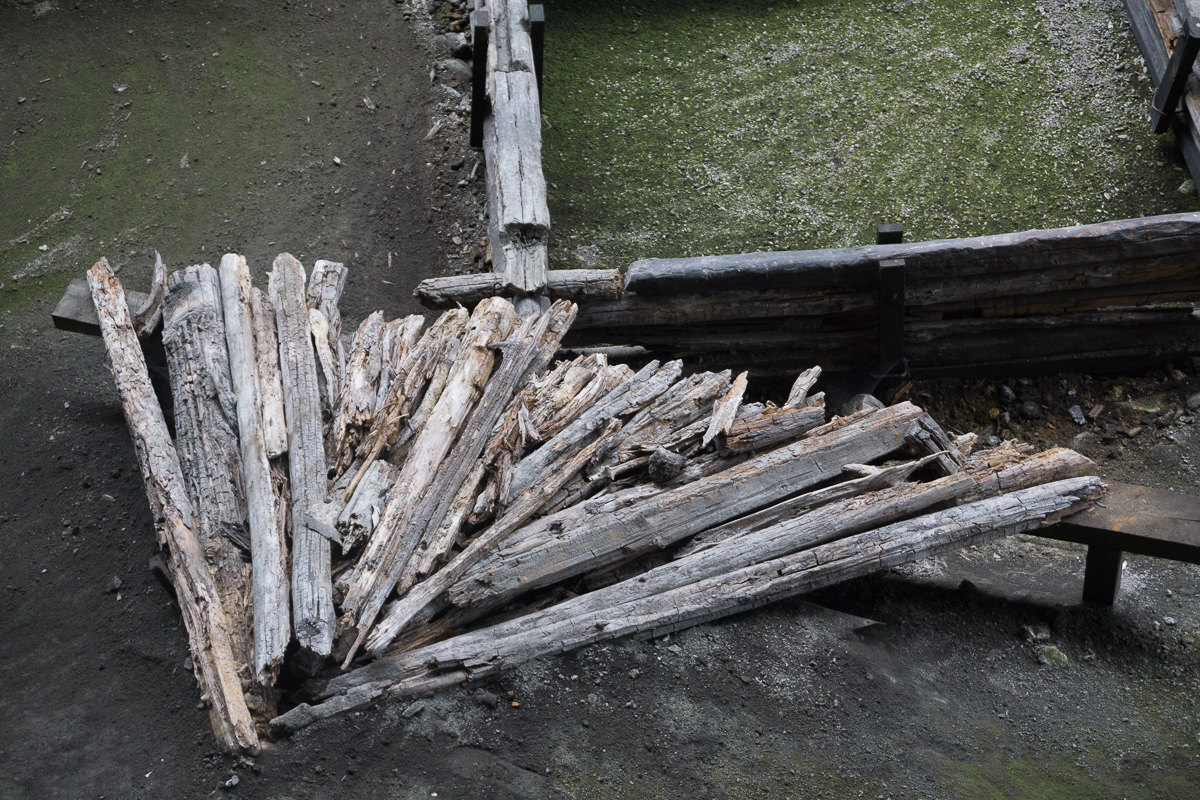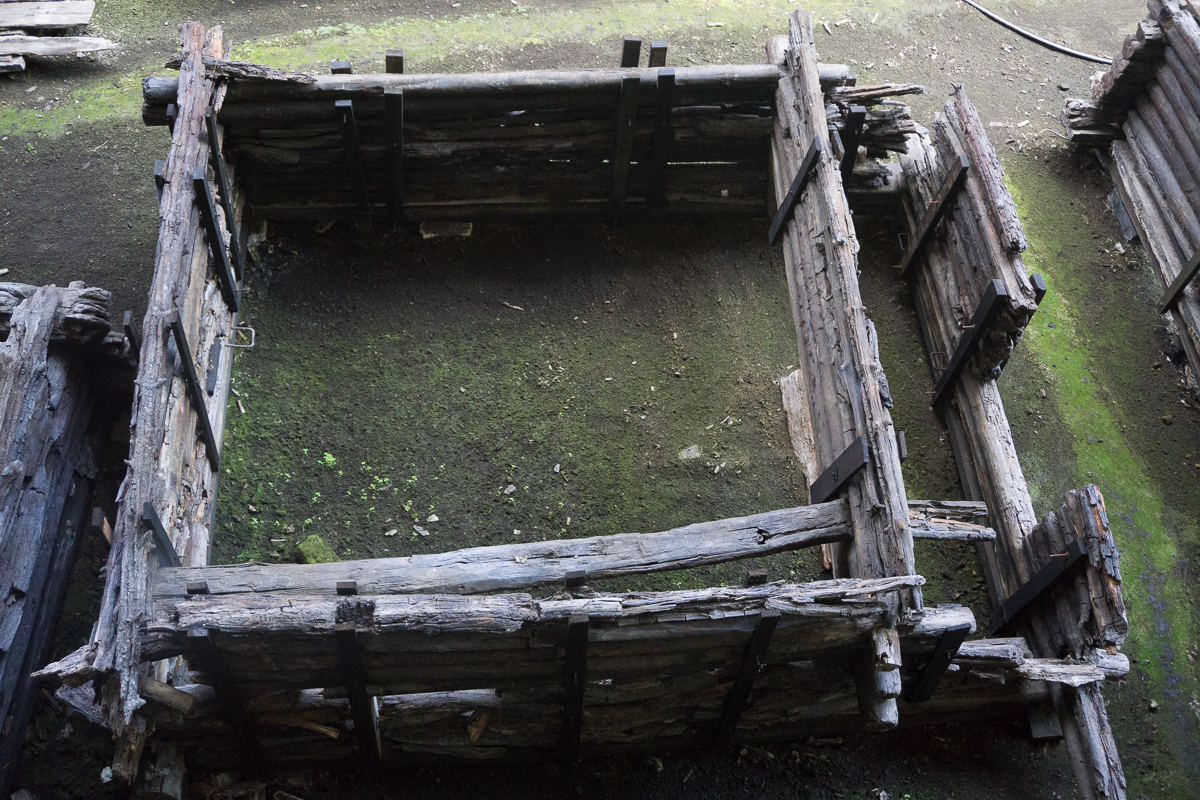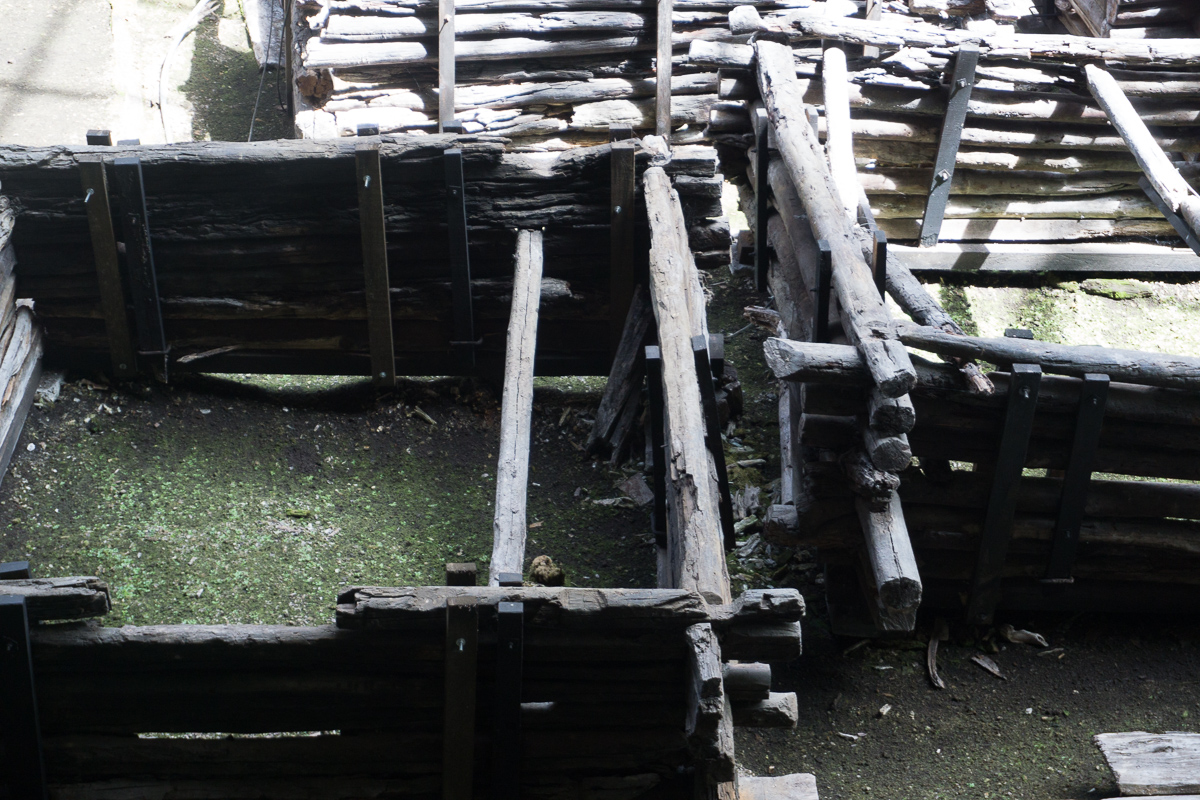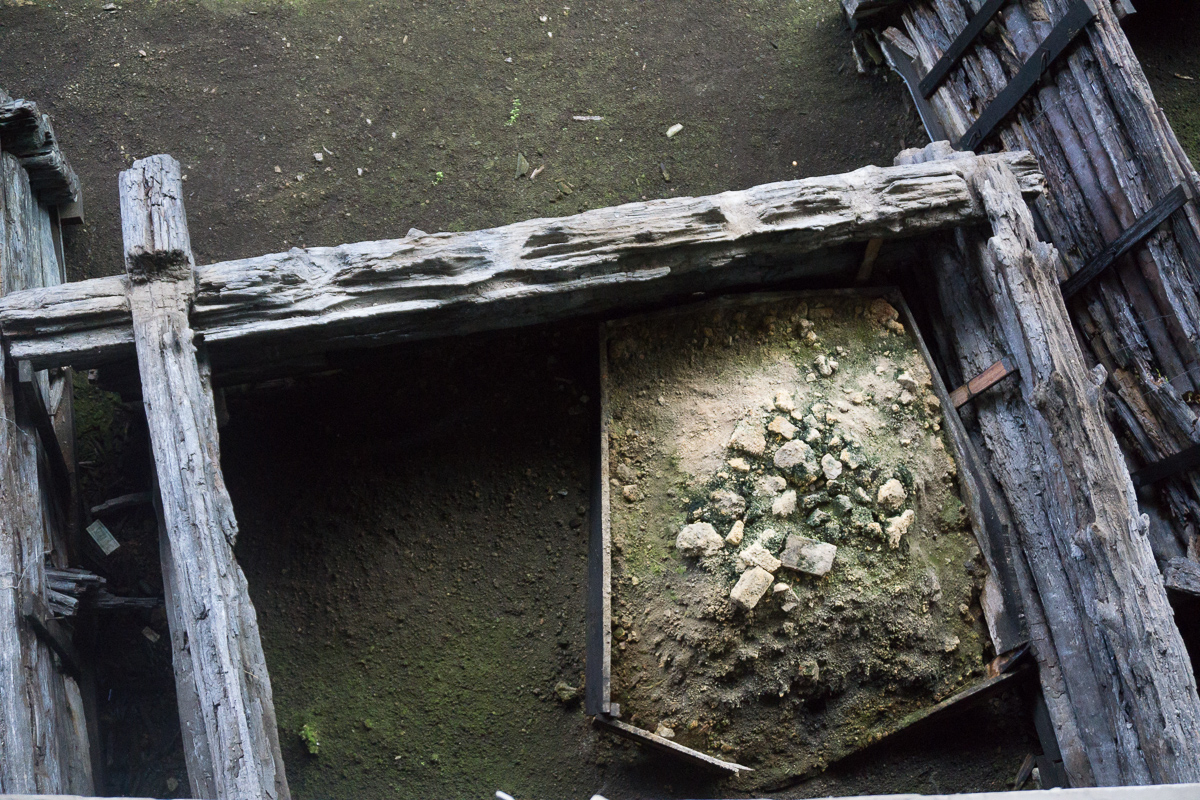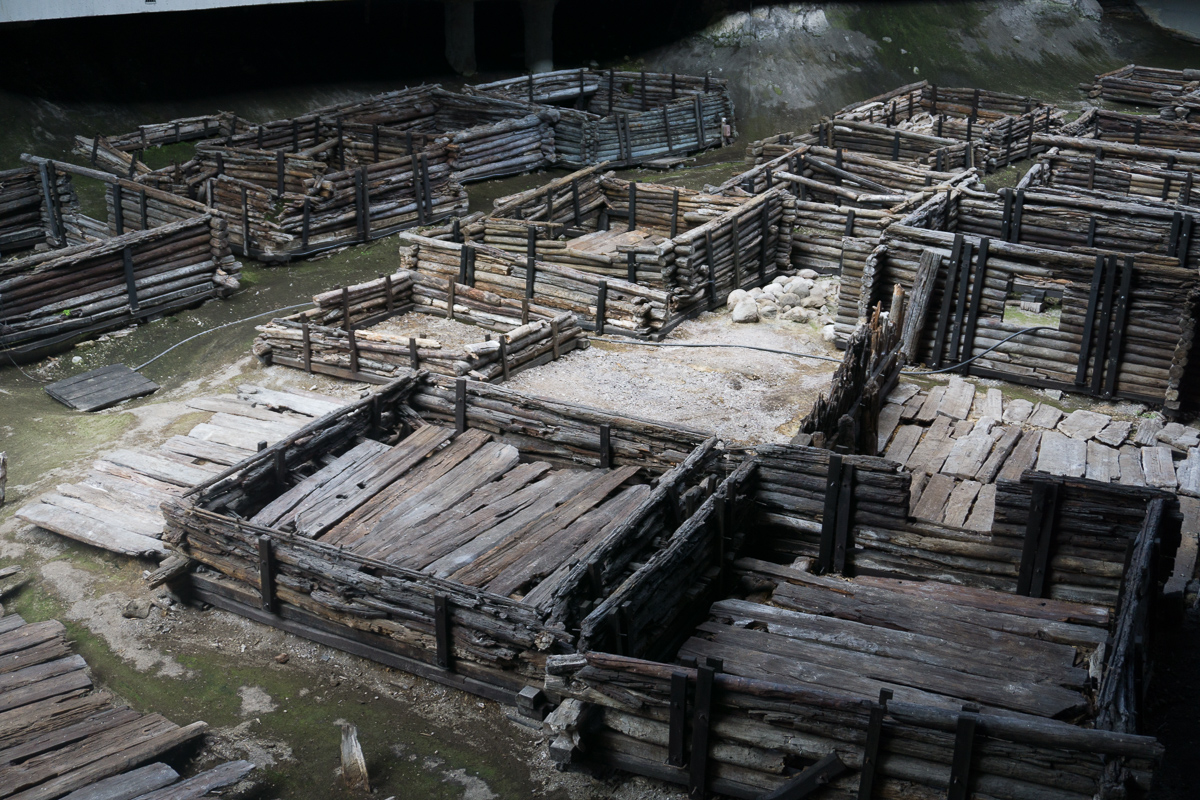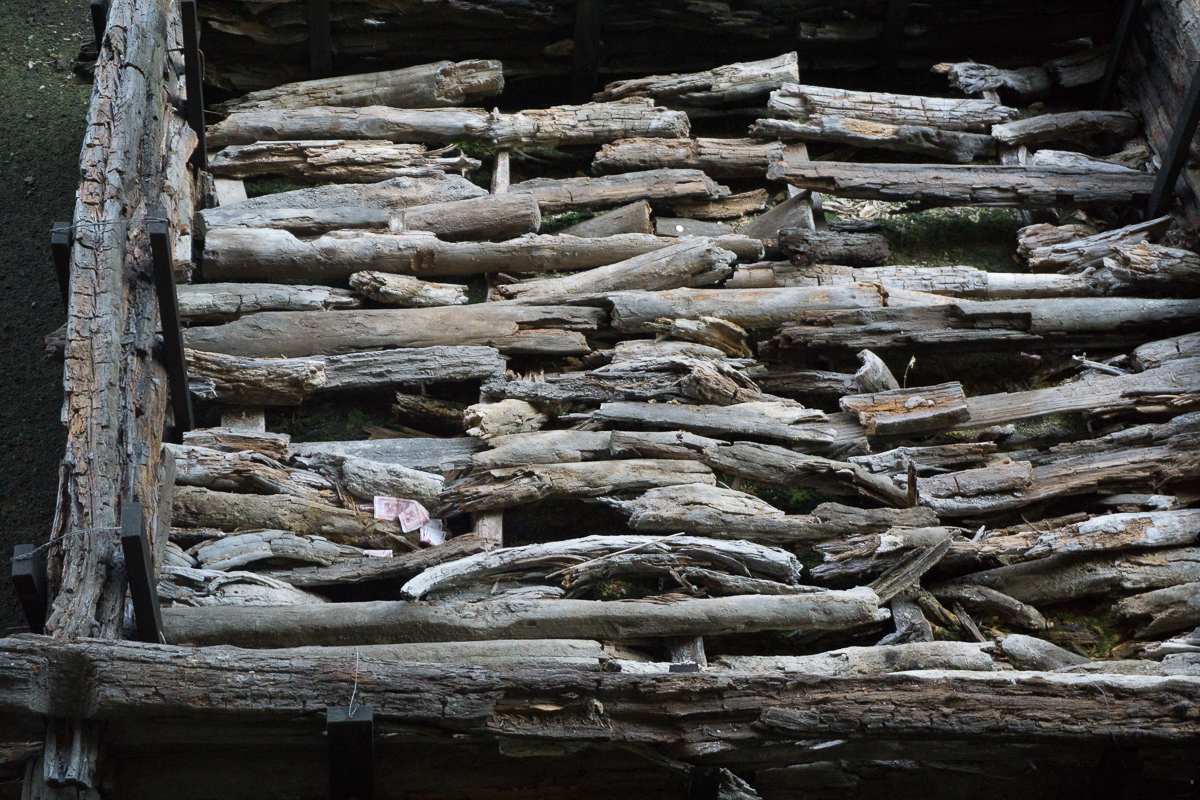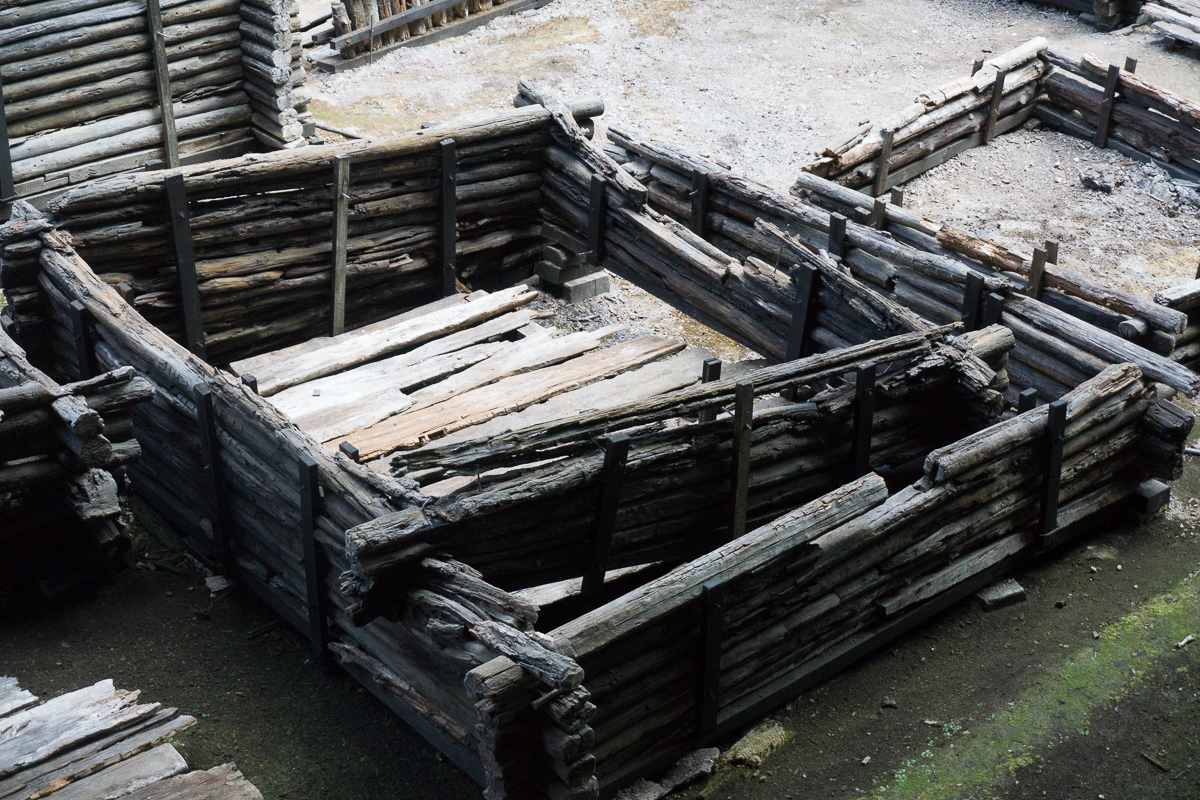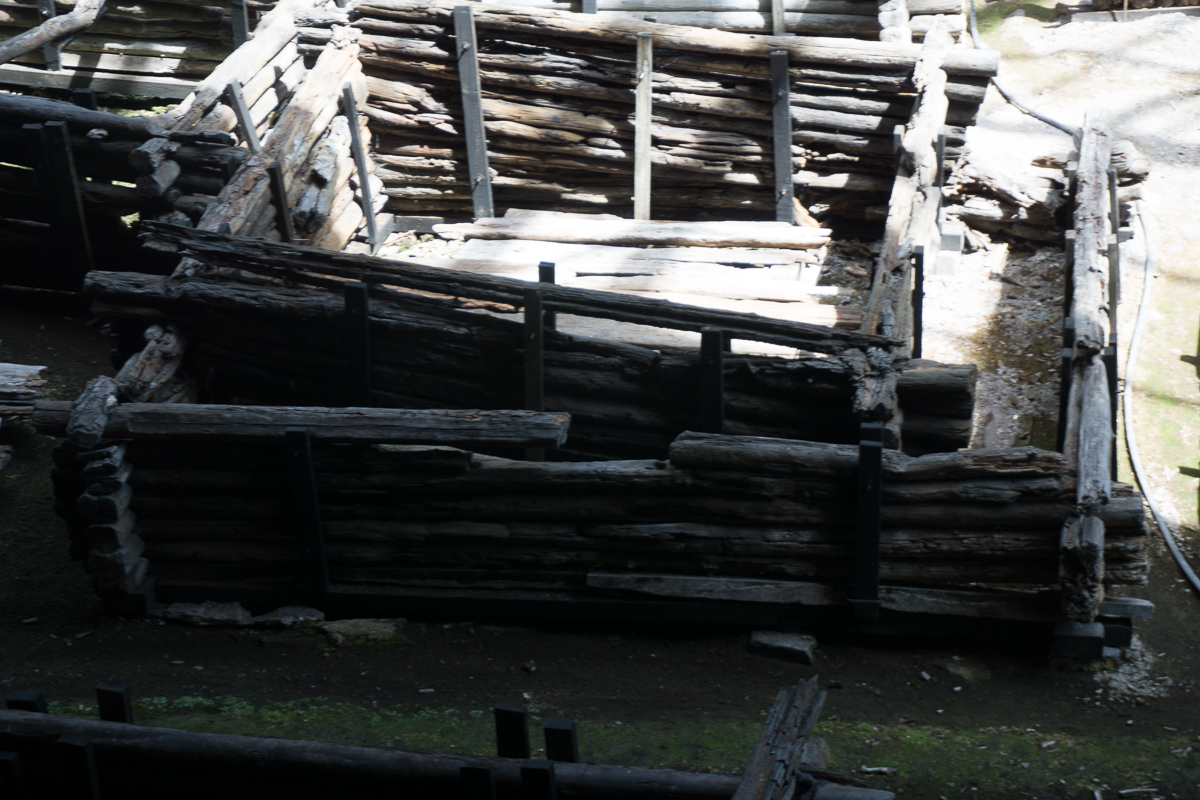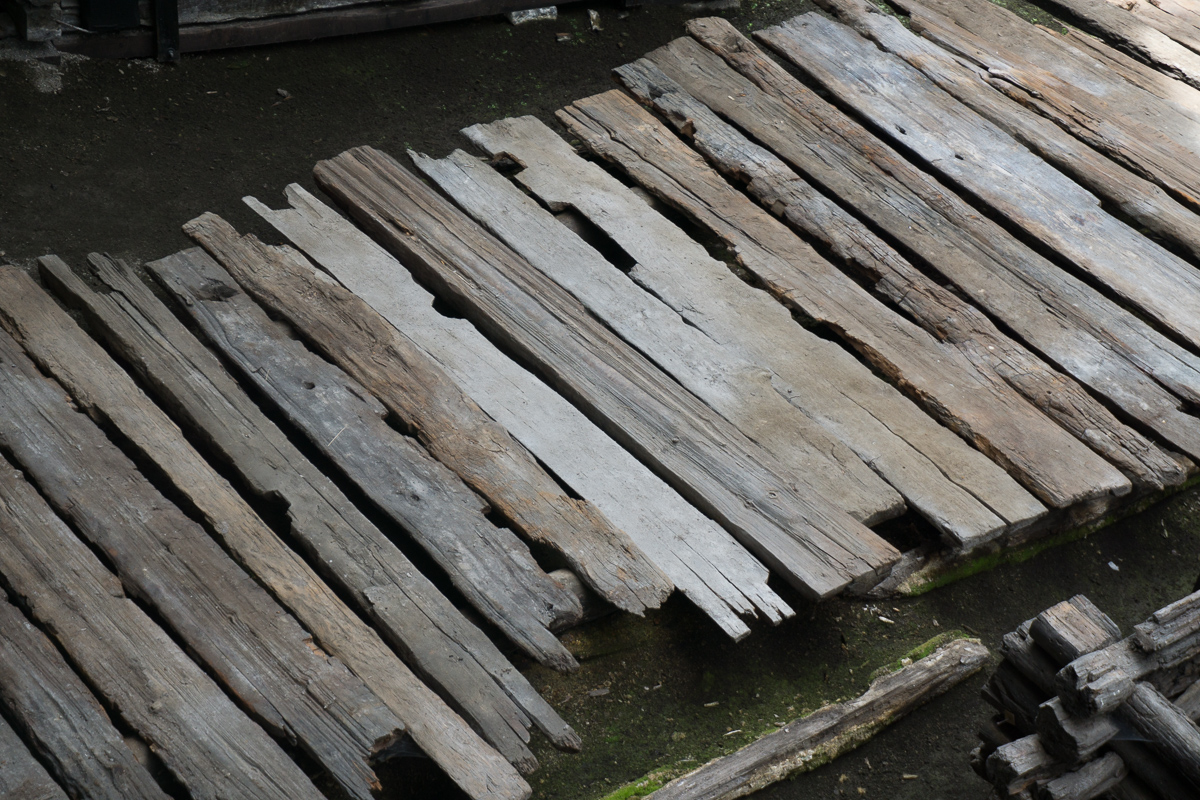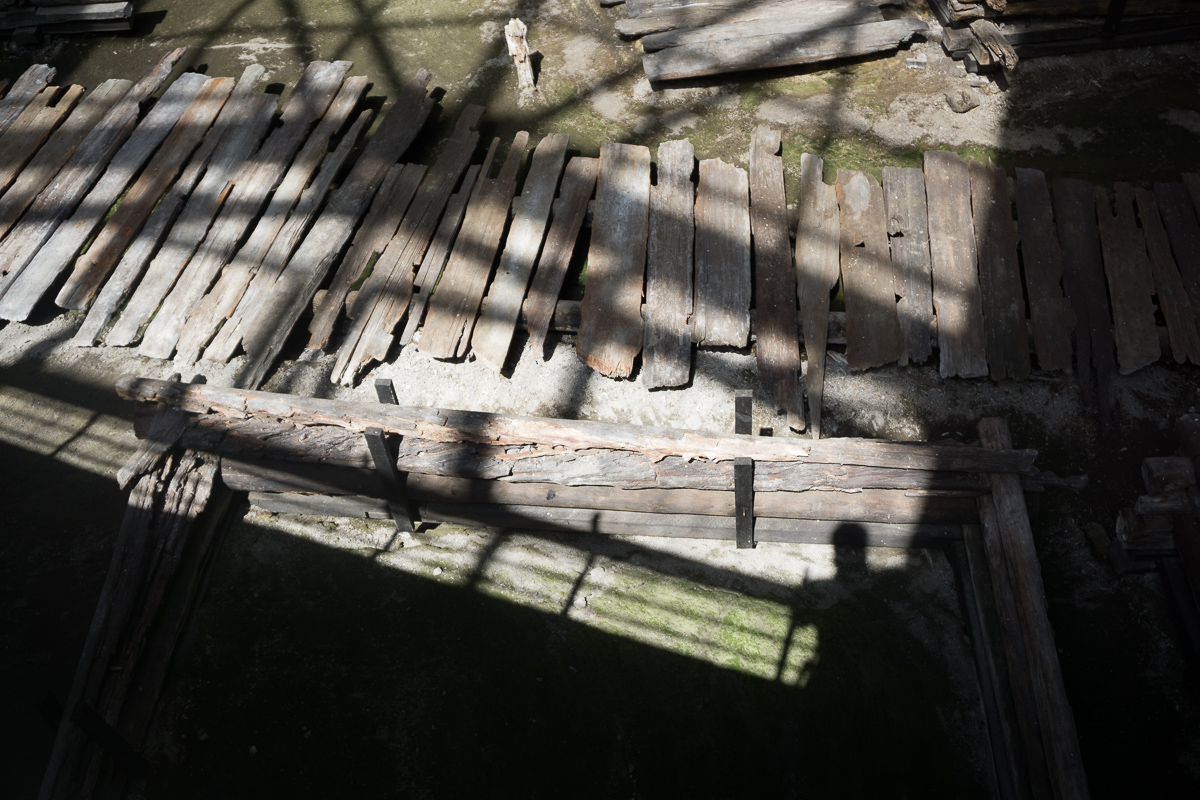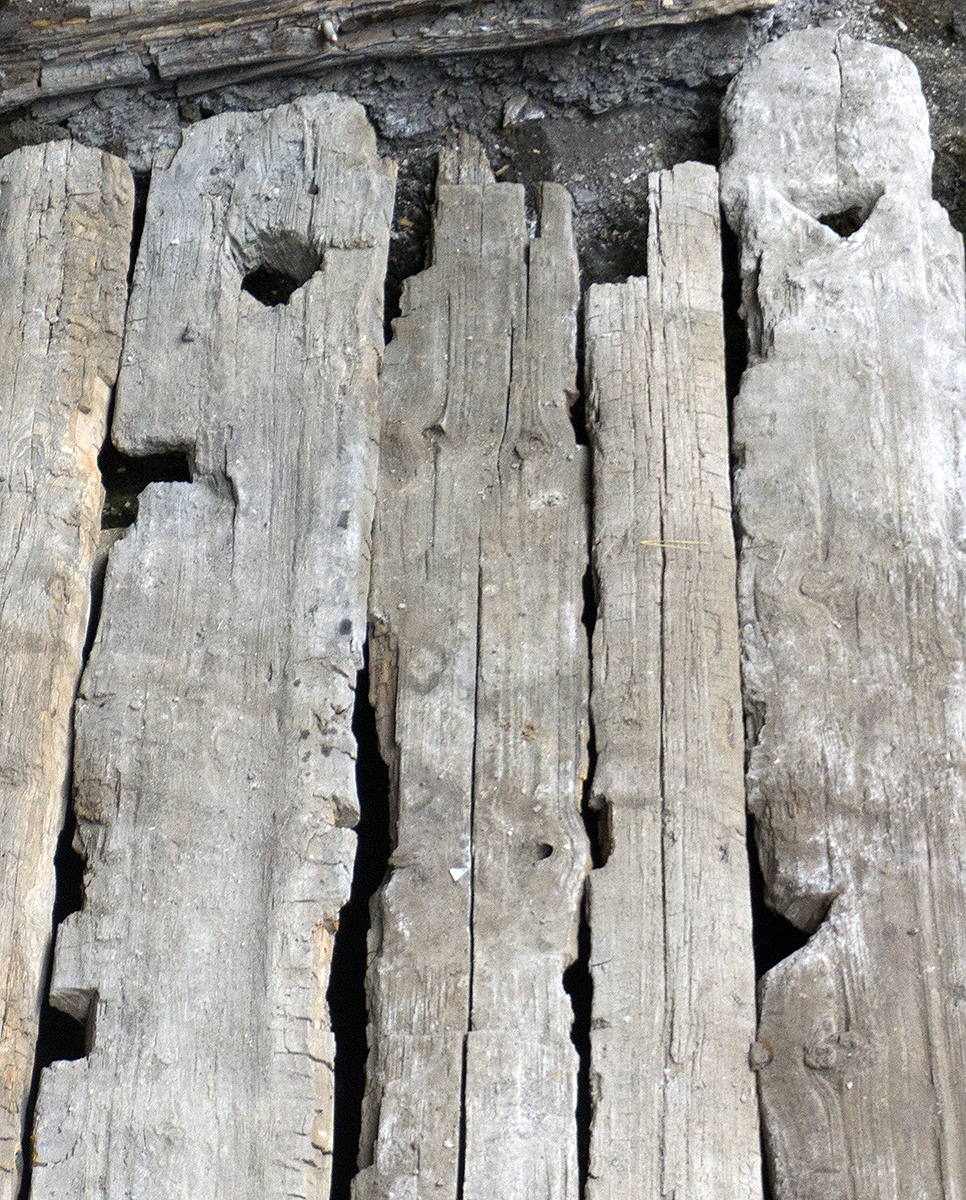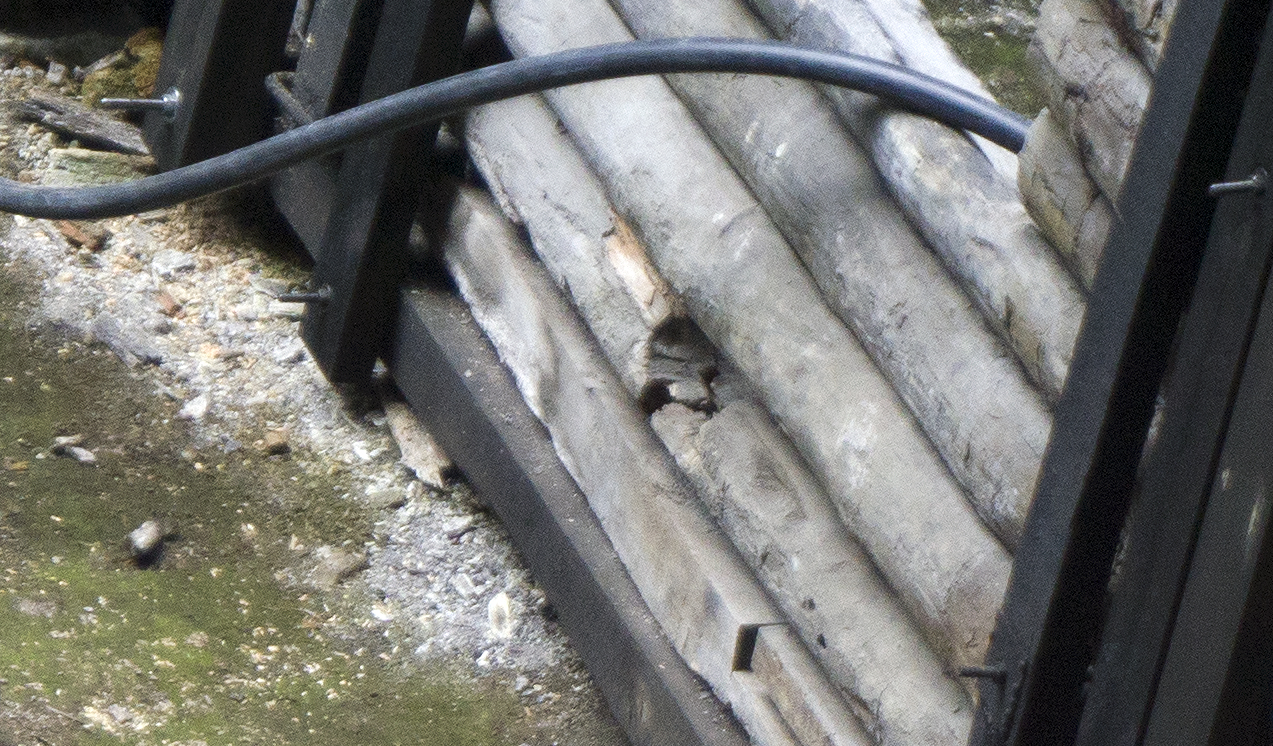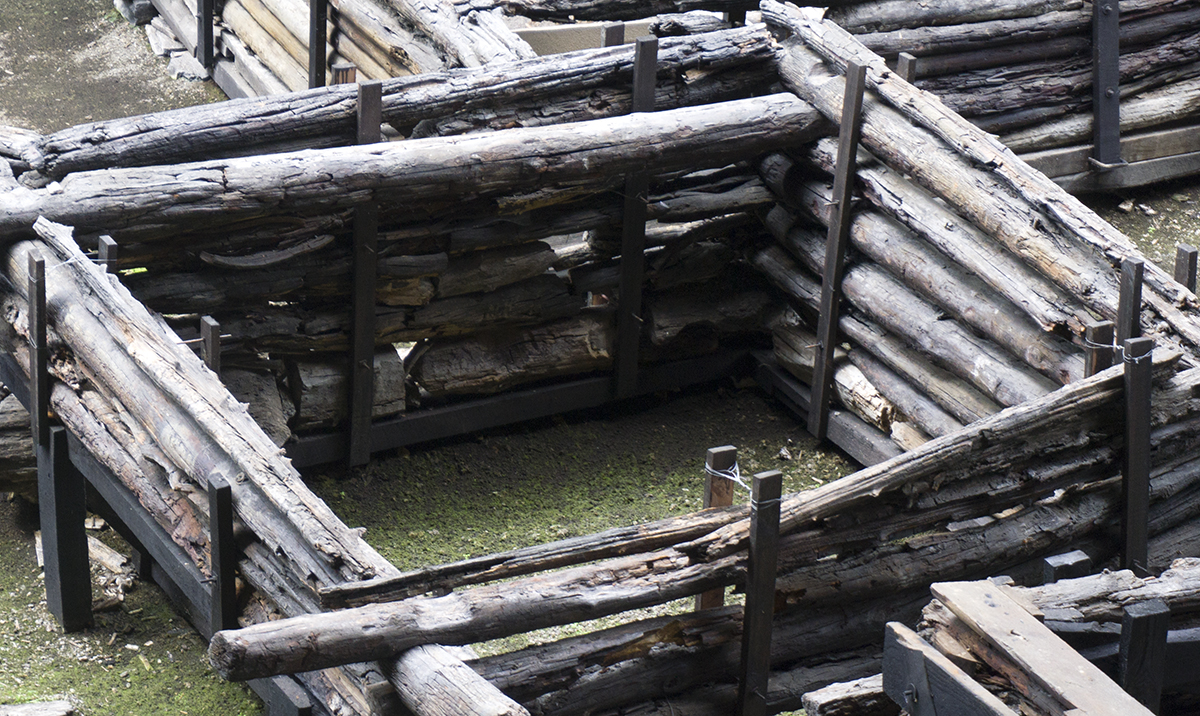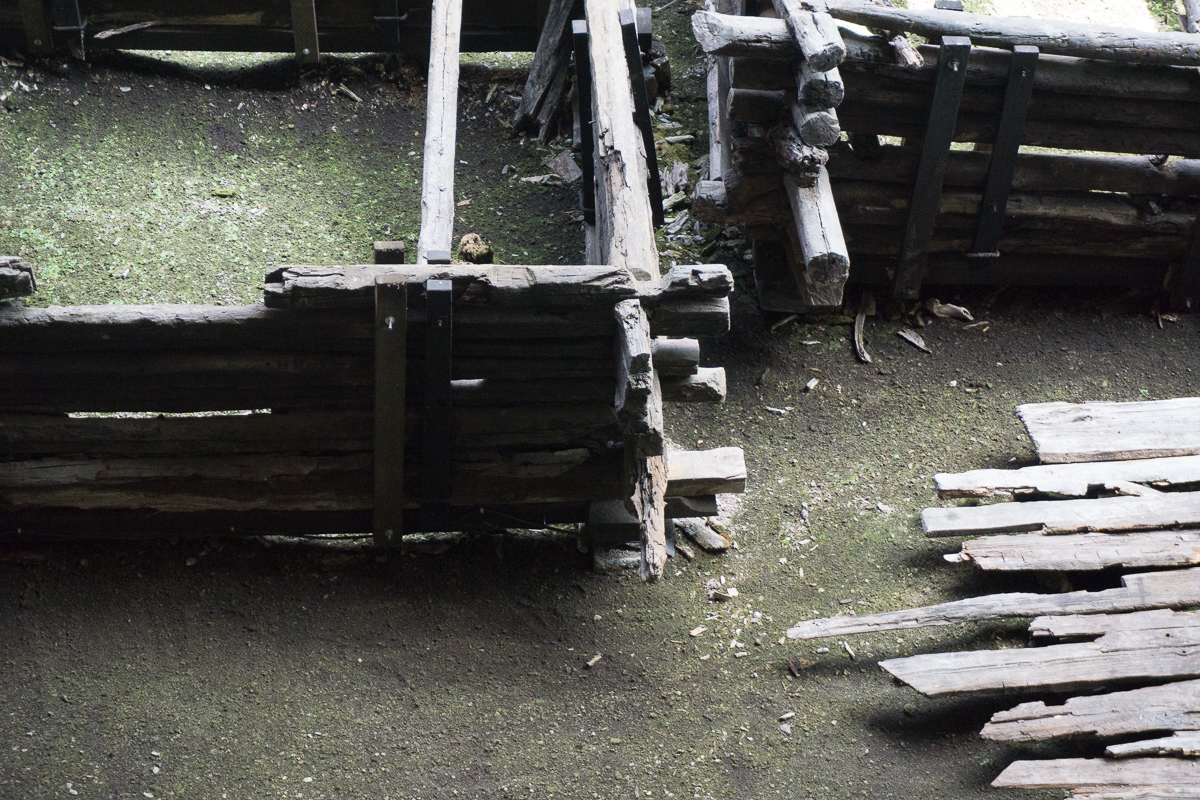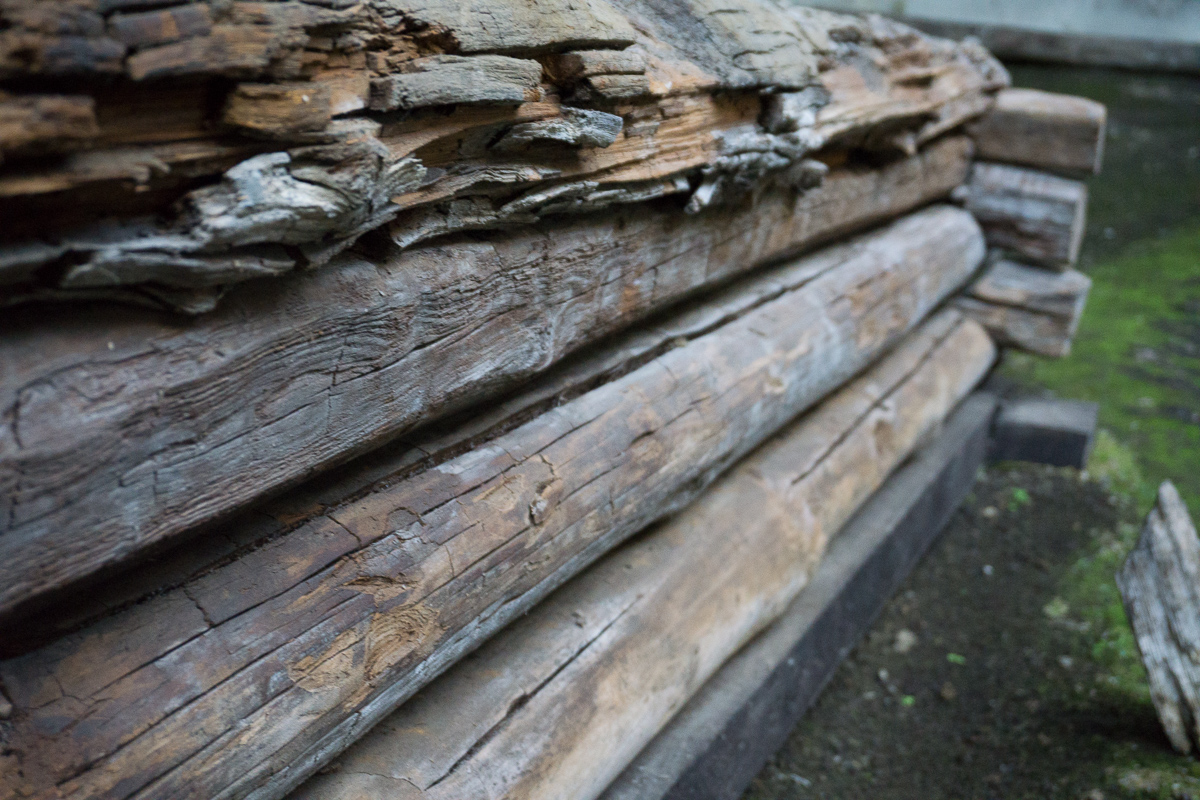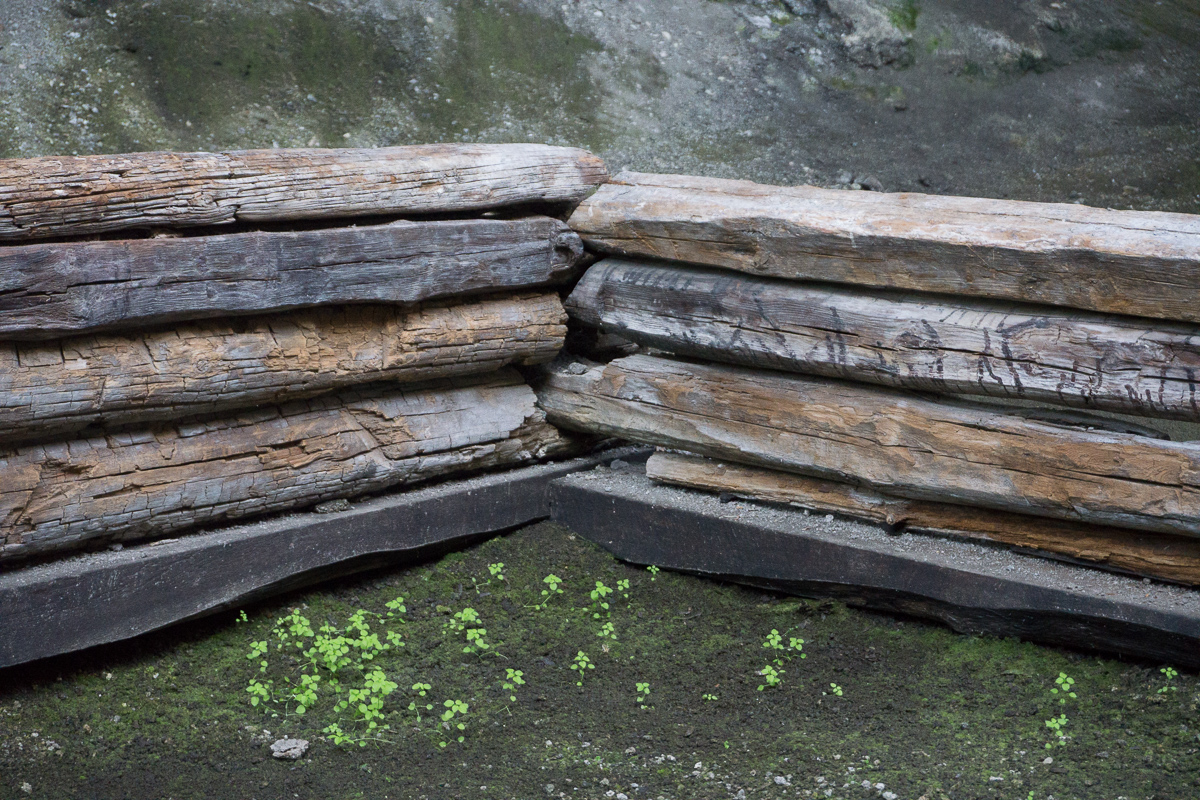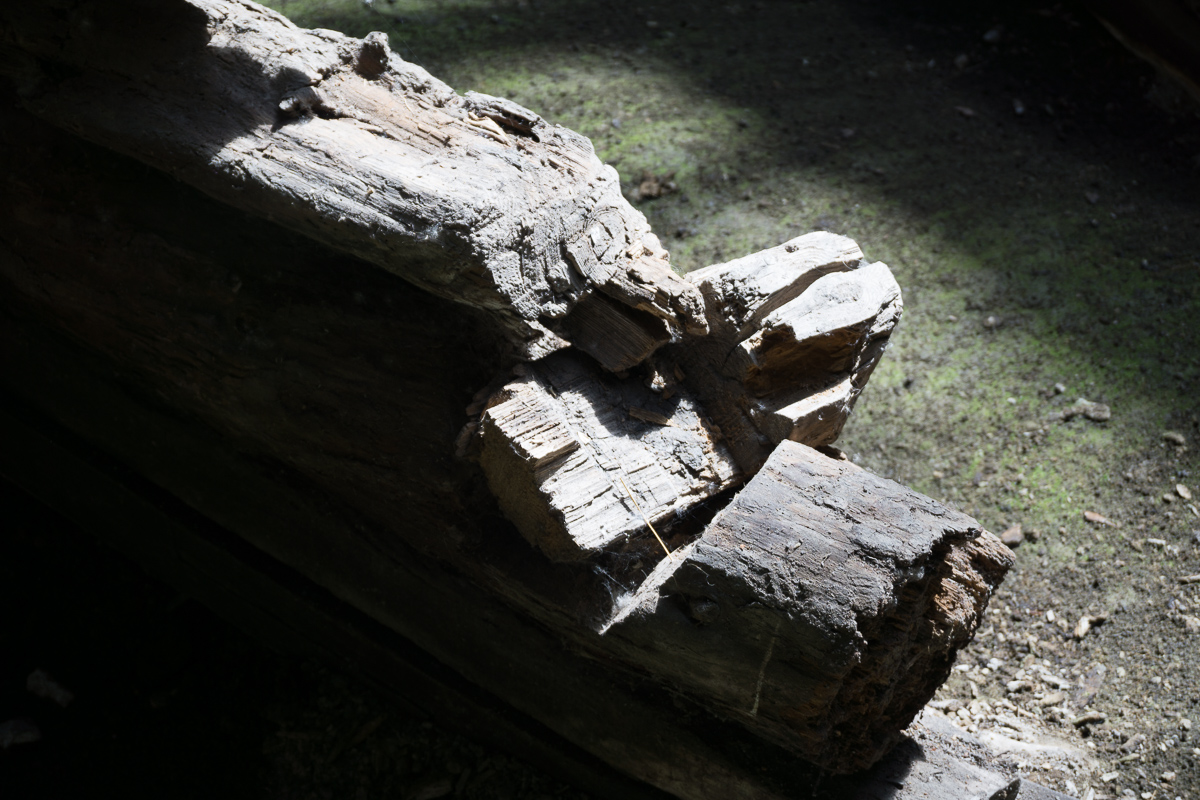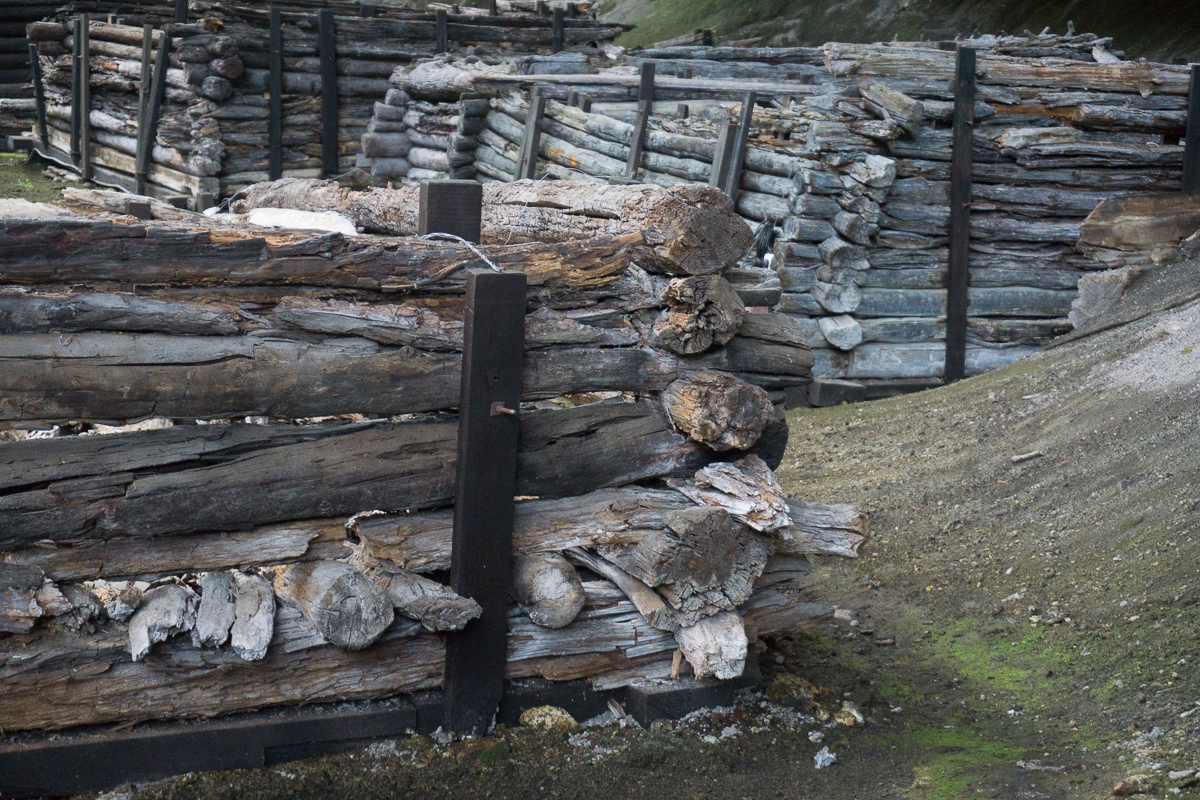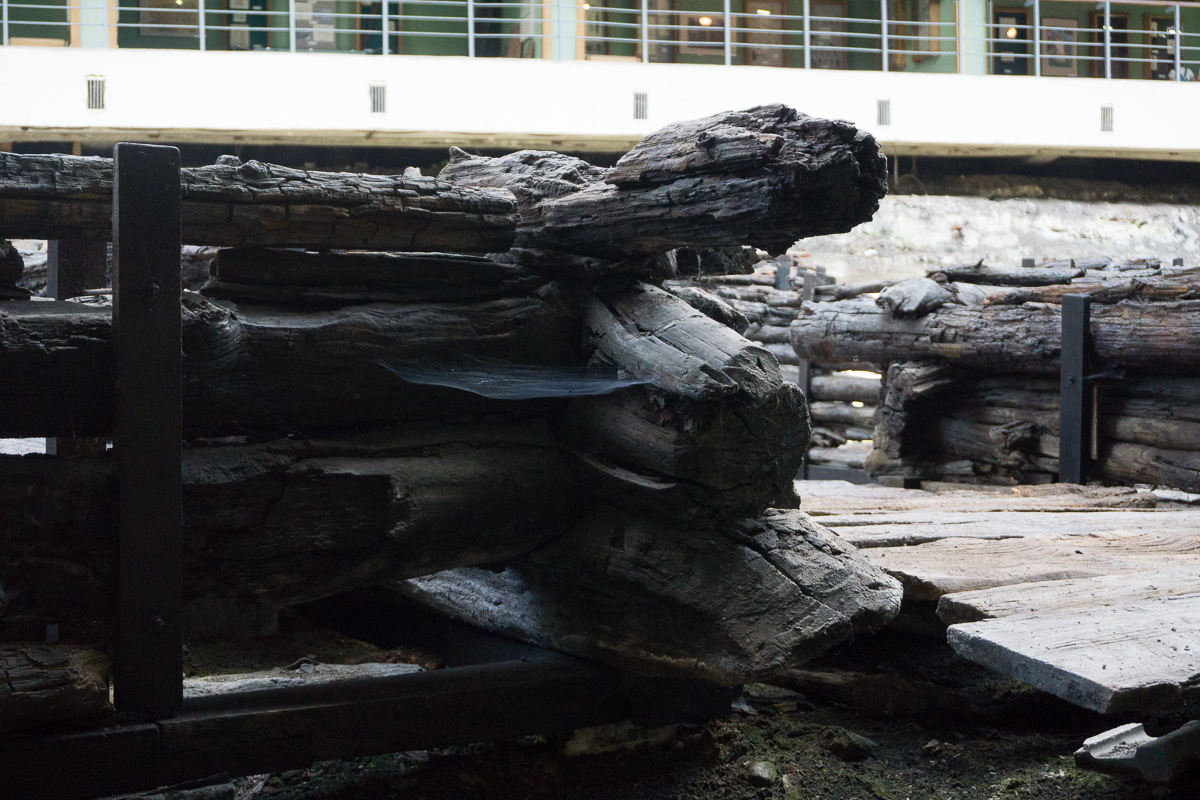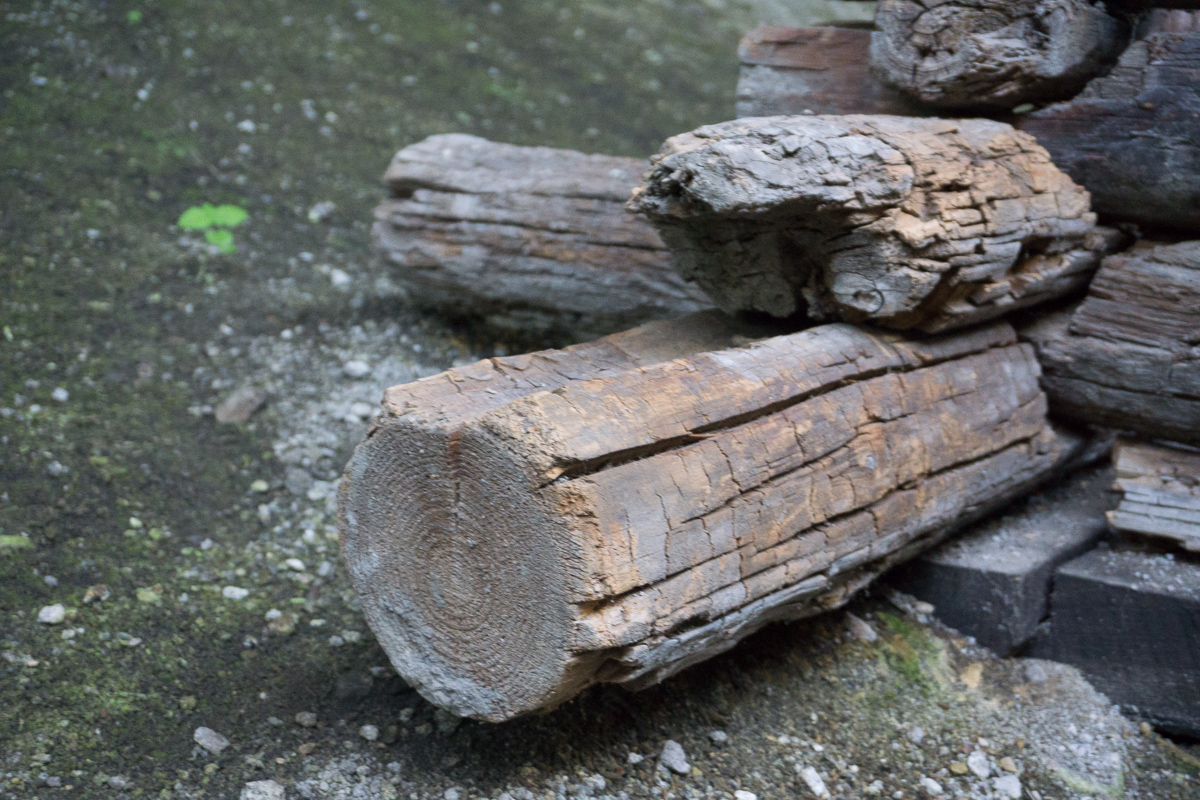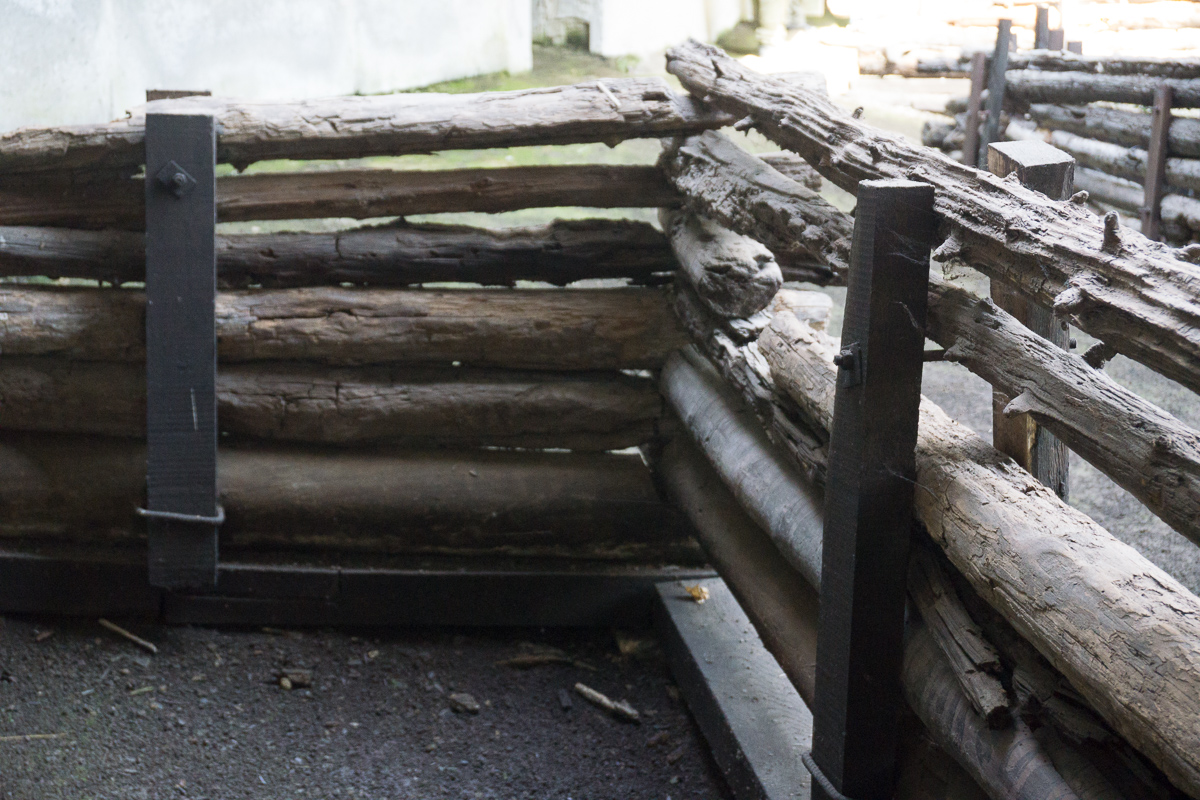Near an excavation edge some remains of logs were laid out in a semicircle. It puzzled us a lot. Maybe these are remnants of flooring or palisade? But the answer was very simple. While clearing the area of the excavation separately lying logs were not thrown away, but gently placed on the edge.
Generally, it is sometimes difficult to distinguish where it is the original layout of log cabins, and where there are additions of restorers. For example, the wooden floor, as the museum staff says, isn’t original. It was put inside for demonstrativeness, and some boards may be parts of pavement decking.
The problem is aggravated by the fact that, according to archeologists, the cultural layer on the site of the settlement was growing very quickly — 7 meters for 200 years, and new houses were often placed on the site of the previous ones. There are some good examples.
Look at the layout of boarding joists, which were made in reach-through cutting technique. In some houses they were arranged in two tiers at a considerable distance from each other.
Perhaps, some of these joists indicate the presence of grownd floors in some houses, but there are houses where it’s impossible. For example, a log cabin with remains of the stove. Directly above the stove there are grooves, traces of joists notch. This means that the stove had been already out of service when the joists were installed.
In the houses of Berestye there are two types of floor construction:
1. Floor of cleaving planks on boarding joists.
2. Floor of logs. Now the floor looks like a pile of rotting garbage, but at the time of discovery, it was almost in perfect condition.
There is an interesting six-wall house, which we firstly took for a house with a gallery. Apparently, these are two different log houses of different periods, standing one over another. Two walls of the smaller one were fixed to the older house. Note, that the exits of these buildings are oriented differently.
There is a lot of recycled material in these buildings. In ancient Russian cities of X–XI centuries the situation is similar. After dismantling of houses, ships etc. boards and logs were often reused. There are many examples in Ladoga and Novgorod, we see it in «Berestye» as well.
Longitudinal grooves in logs are preserved not very well, so it was difficult to identify their form. What does it matter for us? Form of connecting elements and processing traces can tell a lot about how these grooves were cut. And this is very important for creating a high-quality replica.
Some grooves have almost semicircular form. It’s not clear what tool they were made with. There are no finds of semicircular addices for this period. Perhaps they were cut out with axe, and then completed with semicircular spokeshave. This technique is found in the ethnography of the Russian North.
← The first part of the report about Berestye.
